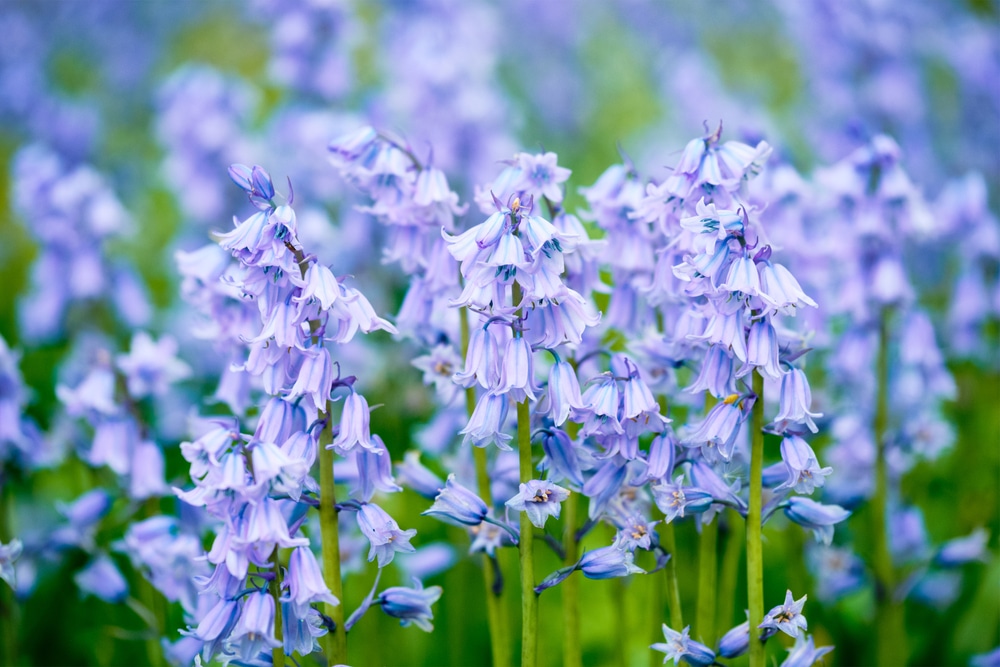What makes a flower (or anything else) quintessentially Spanish, anyway? It probably isn’t quite right to look at present-day Spain alone because the definition would keep shifting over time, but flowers that were first found or have been traced back to Spanish soil are pretty unequivocally Spanish.
That’s the case for all the flower species listed here. Some, like the Spanish bluebell, are so common they’re actually considered invasive in parts of the world, while others are found in precisely one place and are on the verge of extinction. Regardless, these flowers all share Spanish roots.
Common Flowers Native to Spain
These common flower species are no less beautiful than the most unique and rare flowers. Socrates probably enjoyed looking at carnations that were the ancient ancestors of the very same ones we see today. These Spanish flowers are impressively persistent.
Red Carnation
The red carnation is the national flower of Spain, though carnations may be originally from elsewhere nearby in the Mediterranean region. They’ve been a familiar flower in western culture since its very beginnings in ancient Greece.
Despite the frequent presence of carnations in bouquets, carnations aren’t particularly easy to grow. These flowers are particular regarding how much sun they get, and they only do well in hardiness zones 7-10, for example.
Still, after a couple of millennia, it’s hard to see carnations going out of style anytime soon. There is something striking about the red blooms that embodies timeless Spanish culture. The oils from this flower are also edible and can be used to treat skin irritation and hormonal problems.
Spanish Bluebells
It’s a good thing that Spanish bluebells are, in fact, native to Spain because they aren’t genuinely blue but instead have blue highlights. These pretty spring bulbs bring early-season color to gardens as far north as zone 3.
A word of caution, however: Spanish bluebells are invasive in the UK. You should stick to planting English bluebells if you live there. They look similar, but Spanish bluebells threaten to choke the native species.
Rare Flowers Native to Spain
There are quite a few flower species that are only native to Spain’s Balearic islands. These islands are rocky and remote, so the native species tend to be very specifically adapted to their habitat, threatened by extinction but unable to be cultivated elsewhere.
It’s sad to know that most of these rare flowers will soon only exist in historical record, true, but also interesting to think about the Spanish soil that produced the perfect growth conditions for these species, even if only for some time.
Euphorbia Margalidiana
Euphorbia margalidiana is a shrub so rare that it’s only been found on one islet off the northwestern coast of Ibiza. It would be difficult to grow elsewhere because it requires a rocky environment with full sun but not-quite-direct sea spray.
This plant is considered “vulnerable” and is legally protected by Spain in an effort to preserve the species, though its environment is so remote that humans aren’t posing much of a threat.
Olive-Leaved Gromwell
The olive-leaved gromwell also goes by a couple of other scientific names: Lithodora oleifolia and Glandora oleifolia. Whatever you choose to call it, this flower comes from the Eastern Pyrenees mountain range and likes a relatively narrow range of growth environments (zones 6-8).
The showy blue flowers bloom in the summer, but the leaves are evergreen, making the olive-leaved gromwell a pleasant choice for a rocky garden year-round.
Ligusticum Huteri
Ligusticum huteri is critically endangered and only grows in one tiny, remote location in northern Majorca. Only 408 of these plants were documented in 2015, and they can’t grow elsewhere, so these little white flowers are likely on their way to extinction.
Narcissus Longispathus
Narcissus longispathus is a rare type of daffodil originally from southern Spain. Only one bee species can pollinate this flower, which is considered endangered, but an encouraging sign is that it does well in cultivation.
Majorcan Peony
The Majorcan peony (AKA Paeonia cambessedessii) is a rare and sensitive peony, but it’s very beautiful and can live for many years. The flowers are a soft dusty pink, and the leaves have a lovely purple tinge to them.
Conclusion
Spain can take credit for a wide range of flowers, from the ubiquitous red carnation to the sad, possibly extinct Ligusticum huteri. It’s hard not to wonder what Spanish soil provided the right conditions at the right time for these species.
Maybe the next critically endangered flowering shrub found on Spain’s Balearic Islands will make its way into the bouquets of the distant future.

